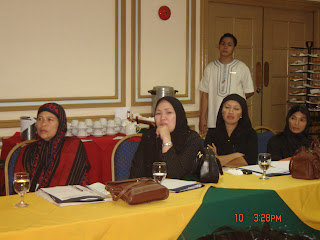Isabelita Solamo Antonio
The ultimate vision or goal is peace and of course, development of the Bangsamoro region and the Philippines as well. One of the main methods is the creation of a new political subdivision with more powers than that which local government units or regions like the current Autonomous Region in Muslim Mindanao or ARMM are holding now. All political subdivisions such as cities,provinces, and autonomous regions are Congress created.
The current Constitution provides for autonomous region in Muslim Mindanao. And as well the same Constitution provides that an organic act of an autonomous region shall provide for creation of sources of revenues. This was spelled out in the just concluded annex on revenue generation & wealth sharing. The language in the annex on revenue generation & wealth sharing will guide the Bangsamoro Transition Commission (BTC) in drafting the proposed Basic Law.
Meantime, because time is of the essence, it would be ideal if both the Bangsamoro Transition Commission (BTC) & Congress can now start to look at the Framework Agreement on the Bangsamoro and the annex on wealth sharing and how all these can be translated into a legislative language towards a Bangsamoro basic law, while waiting for the rest of the annexes on power sharing and normalization.
As to the annex on the power sharing which still has to be finished, the emerging language and the reported talking points are also found in the Constitution and the Local Government Code: reserved powers, concurrent powers and devolved powers. Reserved powers are not given to the autonomous regions such as national defense, foreign affairs, tariff and customs, citizenship, etc
The Constitution provides that the Organic Act shall define the basic structure of government for the region consisting of the executive and legislative which shall be elective and representative. And as to the judicial matters: for now just personal and civil law. Judicial matters are both national and regional in Muslim areas ~~ according to the current constitution.
The CSO statement for the peace panels just before the recent peace talks in Kuala Lumpur was silent on the track of amending the Constitution and used the word “legalization.” The CSO statement also said that the seeming “delay has already stymied the substantive work of the Transition Commission (BTC) in drafting the Bangsamoro Basic Law and identifying possible processes for the legalization of the upcoming political settlement.”
The revenue and wealth sharing annex of the Bangsamoro Framework Agreement outlined how the Bangsamoro can have more resources through sharing in taxes, revenues, fund sourcing and sharing of natural resources.
The Bangsamoro’s share of the national taxes collected in the region shall be three fourths and the national government retains one fourth. The annex on wealth sharing provides that this is without prejudice to the future Bangsamoro Basic Law remitting the 25% national share to the region for a “limited period of time.”
Another breakthrough is the sharing of natural resources: non metallic such as sand and gravel shall pertain to the Bangsamoro, as to metallic, three fourths to the Bangsamoro and as to fossil fuels such as natural gas, the sharing is equal.
The Bangsamoro government will have the power to contract loans in its name except for loans which require sovereign guarantee, in which case, the central government shall help facilitate the process.
There will be automatic budget appropriation and this block grant aside from the Special Development Fund shall not be less than the current budget of the ARMM and both national and Bangsamoro governments shall review this after a decade based on revenues generated in the Bangsamoro region.
It will be all to our interests that there will be peace, so that all these talk about wealth sharing will happen for Mindanao and the Philippines. ~ written in July 17, 2013






sige ba, okay na. one peace agreement at a time. if the secessionists in jolo make trouble later, let's deal with it later. meanwhile, peace and good will tayo
ReplyDeletethis is very hopeful enough already Shei -coming from you as in "hope is the triumph over experience."
ReplyDelete